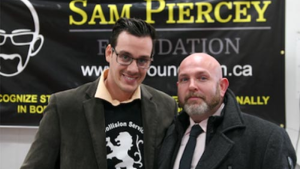Within the past few months, the Collision Repair Industry has been at the forefront of some controversy. All those with a vested interest in collision repair have been living under a rock had they not watched or a least read about the recent exposé from CTV’s W5 program in March. This particular episode of W5 focused on the fact that insurance provider Aviva pre-damaged ten vehicles and had them professionally estimated before equipping them with hidden cameras and parking them on the side of various roads throughout the Greater Toronto Area.
Fraudulent Repair Charges
These vehicles were then towed to ten different collision centres for repairs. Aviva concluded that nine out of the ten vehicles were subject to fraudulent charges during the repair process. And, in some cases, additional damages were caused by those shops the vehicle was towed to.
Although I feel it is necessary to bring awareness to the public with what fraudulent activity can go on in some body shops, I also feel that this exposé painted the entire collision repair industry with the same brush.
The “body shops” depicted in this documentary were largely “chaser shops,” meaning that the majority of their business comes from roadside accidents in which those vehicles are towed to the shops that the tow truck driver is affiliated with.
The tow truck driver receives a commission on the repair of that vehicle, and the customer is then left to deal with the aftermath. Many of the shops represented on this W5 exposé do not have any affiliations with either insurance companies or dealerships, and once that shop has a signed work order, it essentially has carte blanche when it comes to the actual repairs.

A Small Percentage
The problem with media coverage like the W5 episode is that collision repair facilities depicted represent a small percentage of the industry as a whole.
In reality, the majority of collision repair facilities in our province have some sort of relationship with either OEMs or insurance companies. When working with insurance companies, shops have to meet certain KPIs (key performance indicators) in order to receive more business.
Those shops with OEM affiliations are constantly audited to verify they have the necessary tooling, equipment, and training in order to bring vehicles back to the condition and function the OEM originally designed it to perform. These factors provide checks and balances for the majority of reputable shops in our province. They also help ensure that the damage estimate and final invoice are accurate and true.
The documentary was an unfair representation of an industry as a whole. Budds’ Collision and many of my colleagues who own professional repair facilities would welcome the opportunity to repair one of the subject vehicles in this exposé so we could exemplify how a professional organization truly repairs a vehicle correctly and is able to satisfy all parties involved, from the payee right to the customer.





